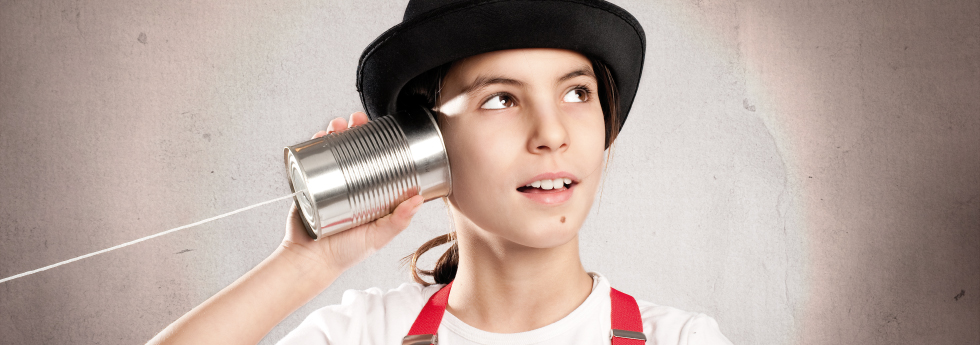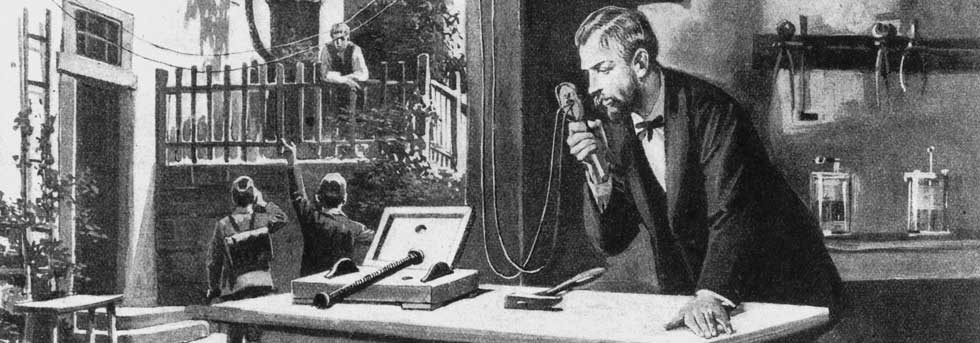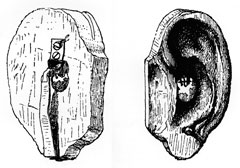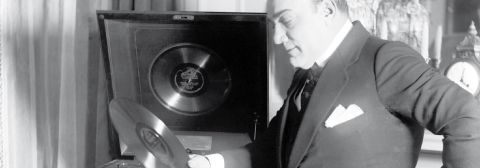INVENTIONS: COMMUNICATION
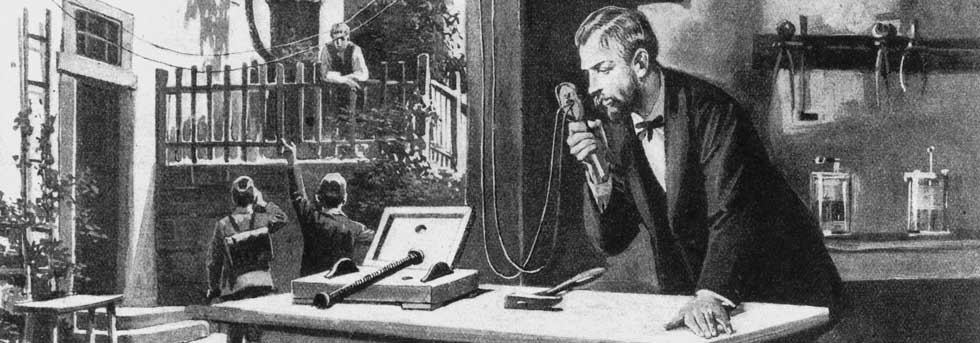
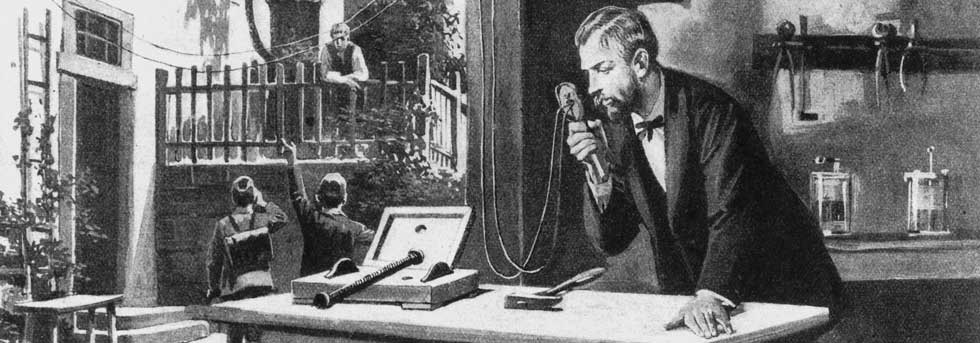
The first telephone
Communicating across long distances – they wanted to do that back in the 19th century. Many researchers experimented with electrical equipment to transfer speech in those days. The breakthrough happened in 1861 thanks to Philipp Reis, a German.
The first telephone consisted of an ear shape made of wood with animal intestine stretched over it. Spoken words make this membrane start to oscillate, thus changing the pressure between a metal plate and a wire. This in turn causes variations in the current that is sent to the recipient, where an amplifier converts it back into sound.
Reis died in 1874 without ever having registered a patent for his invention; this was done on 7th March 1876 by Alexander Graham Bell in the USA.
The first telephone consisted of an ear shape made of wood with animal intestine stretched over it. Spoken words make this membrane start to oscillate, thus changing the pressure between a metal plate and a wire. This in turn causes variations in the current that is sent to the recipient, where an amplifier converts it back into sound.
Reis died in 1874 without ever having registered a patent for his invention; this was done on 7th March 1876 by Alexander Graham Bell in the USA.
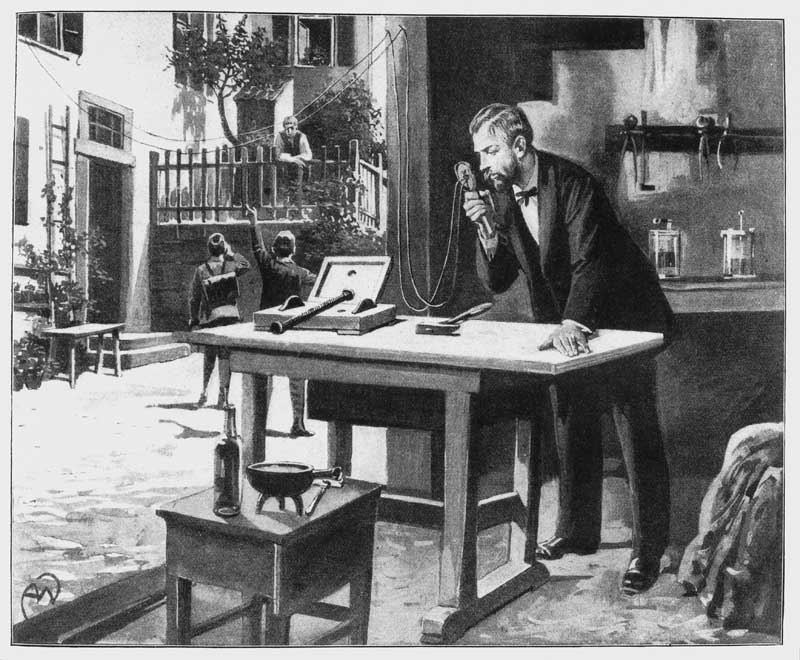
Philipp Reis, the inventor of the telephone, in his “laboratory”
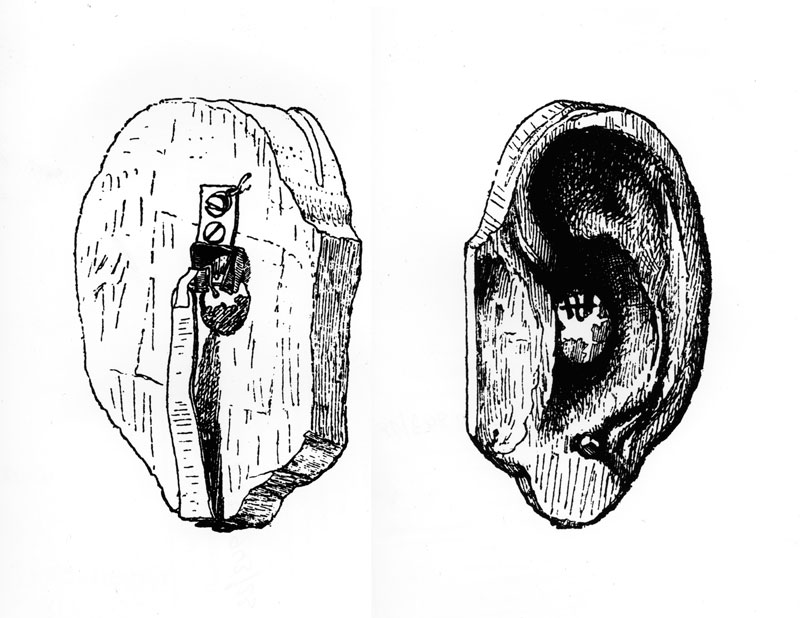
The first telephone mouthpiece: a wooden ear

Music for your pocket
Doing sports, on the underground, on holiday – nowadays people take their favourite music everywhere. A little MP3 player provides space for thousands of songs. This became possible thanks to a development by Karl-Heinz Brandenburg’s team at the Fraunhofer Institute:
The MP3 audio coding method is oriented to human hearing characteristics. Parts of the music that we can hear well are stored in particularly high detail, yet frequencies we cannot hear are cut out. The amount of data that needs saving can be reduced by 90 per cent using this technique. The first MP3 players came onto the market in the 1990s.
The MP3 audio coding method is oriented to human hearing characteristics. Parts of the music that we can hear well are stored in particularly high detail, yet frequencies we cannot hear are cut out. The amount of data that needs saving can be reduced by 90 per cent using this technique. The first MP3 players came onto the market in the 1990s.

Music anytime, anywhere – MP3 makes it possible

International video standard
Live streaming of the Olympics, music videos, film clips and box office hits. Nowadays moving images can be received without a problem in high quality even on mobile devices. This is made possible thanks to particularly efficient video compression methods.
The current international standard is H.264, a procedure developed by researchers in Berlin. This significantly reduces the amount of data without noticeably affecting the quality. Only the parts of each image that change are transmitted. All areas that stay the same can be calculated from the previous image sequences.
The current international standard is H.264, a procedure developed by researchers in Berlin. This significantly reduces the amount of data without noticeably affecting the quality. Only the parts of each image that change are transmitted. All areas that stay the same can be calculated from the previous image sequences.

Thanks to H.264, moving images are available in top quality even on the move
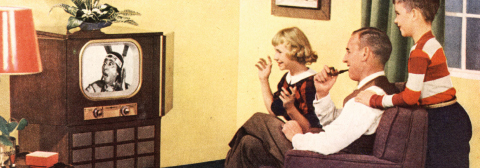
The world in your living room
Modern televisions provide cinema-quality pictures. Digital TV sets are now at the end of a long development process that started in 1931. Back then, Manfred von Ardenne presented the first electronic television set at the Broadcasting Exhibition in Berlin. The device consisted of a cathode ray tube, also known as a Braun tube. Inside it an electron beam projected pixels onto a glass screen coated with fluorescent material. The audience was impressed – even the New York Times reported the invention on its title page.
Manfred von Ardenne was a remarkable inventor: he registered his first patent when he was only 16, and by the time he died in 1997 he had more than 600 inventions and patents in diverse areas to his name.
Manfred von Ardenne was a remarkable inventor: he registered his first patent when he was only 16, and by the time he died in 1997 he had more than 600 inventions and patents in diverse areas to his name.
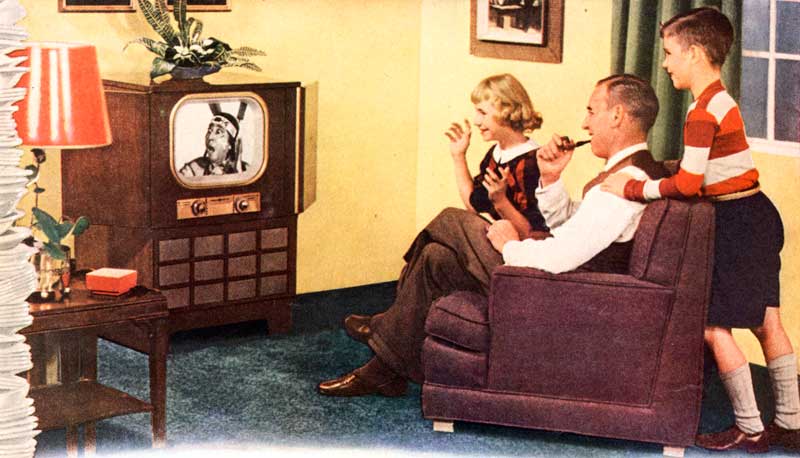
The first regular TV programme in Germany started in 1935
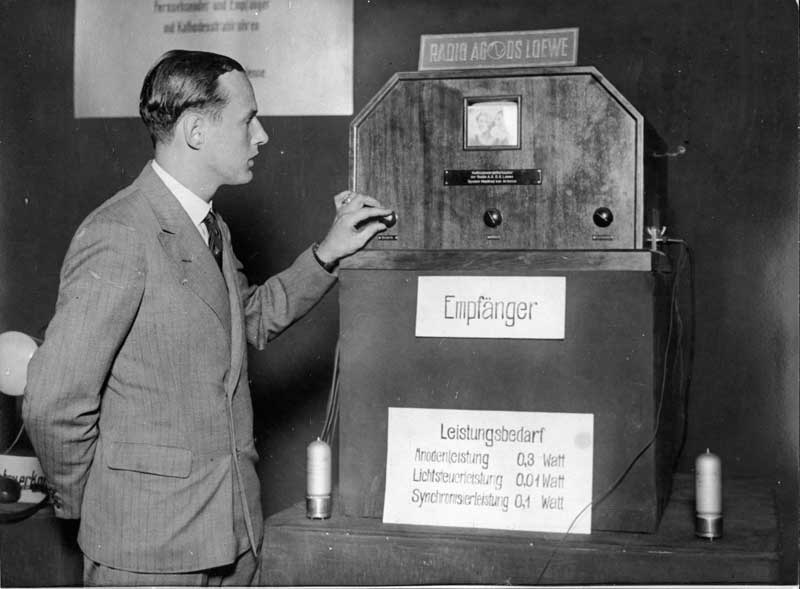
Manfred von Ardenne with the first television, 1931
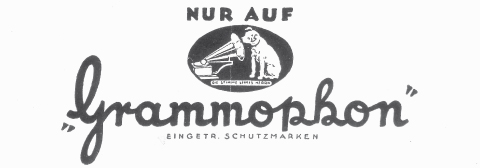
Concerts for everyone
A symphony orchestra that fits in every living room? That seemed unthinkable for a long time. But in 1887 Emil Berliner, of Hanover, built a device that could preserve music. The principle: sound waves are translated into the horizontal movements of a needle and the oscillations are etched into a disc – Berliner termed it “Schallplatte” (gramophone record).
The player, which makes the sound audible again, was called a gramophone. This device made it possible to play music anywhere, again and again. The first gramophones had to be wound up with a handle. Gradually electric gramophones became mainstream.
The player, which makes the sound audible again, was called a gramophone. This device made it possible to play music anywhere, again and again. The first gramophones had to be wound up with a handle. Gradually electric gramophones became mainstream.
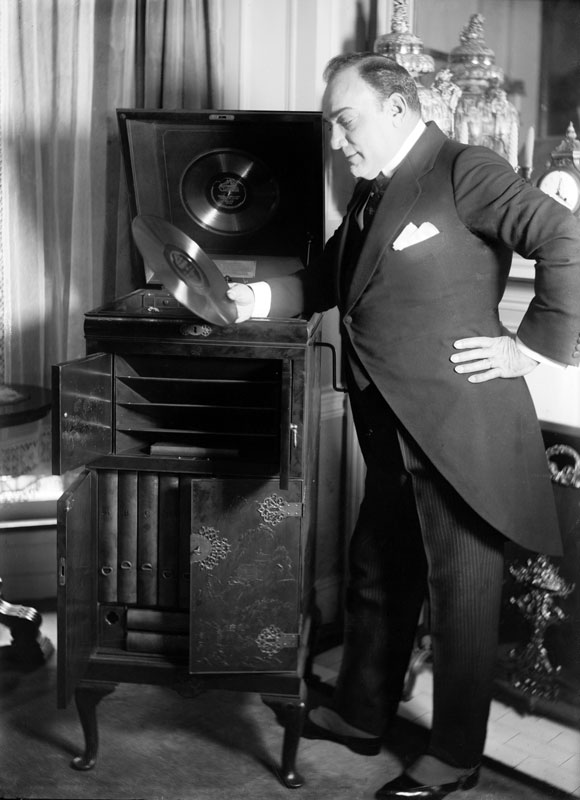
Stars such as opera singer Enrico Caruso quickly made the gramophone record widely known
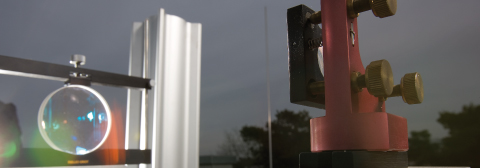
Hidden in the light
Online banking, customer data, important negotiations – there is lots of information that people only want to share with others of their choice. But how can you protect data from hackers while it is being transferred? One technique with potential is quantum cryptography.
With this method, a secret code is hidden, so to speak, in a sequence of photons. Because randomness plays a key role here, the code cannot be cracked. And the best thing is that a spy would be discovered in every instance, because any interaction changes the photons. However the challenge is to transfer the photons across long distances, ideally via satellite. In 2014 researchers at the Max Planck Institute in Erlangen successfully sent special quantum light through the atmosphere using a laser – a key step towards secure data transfer.
» Watch the clip "Quantum Physics – Tap-Proof by Coincidence"
With this method, a secret code is hidden, so to speak, in a sequence of photons. Because randomness plays a key role here, the code cannot be cracked. And the best thing is that a spy would be discovered in every instance, because any interaction changes the photons. However the challenge is to transfer the photons across long distances, ideally via satellite. In 2014 researchers at the Max Planck Institute in Erlangen successfully sent special quantum light through the atmosphere using a laser – a key step towards secure data transfer.
» Watch the clip "Quantum Physics – Tap-Proof by Coincidence"
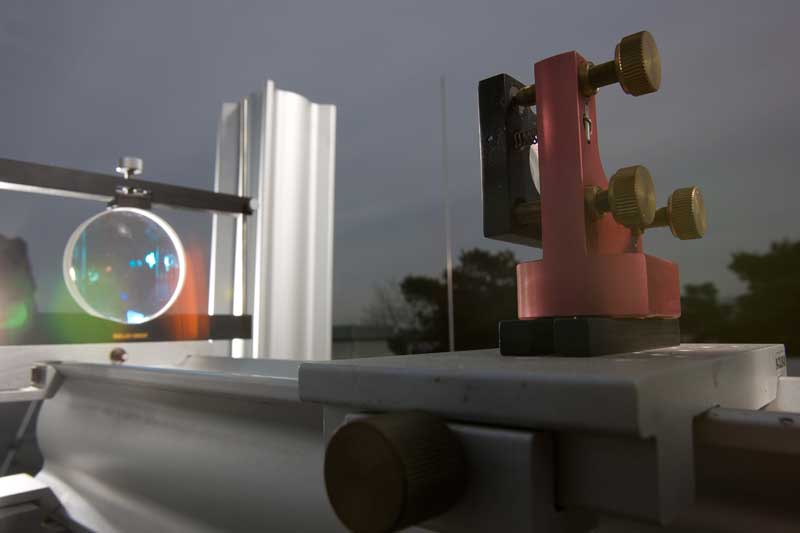 The laser system on the roof of the research institute in Erlangen
The laser system on the roof of the research institute in Erlangen


